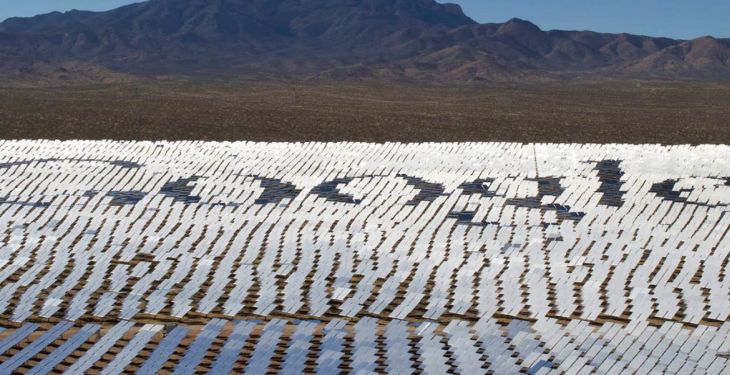Our time to move away from dirty energy to green sources is limited. Federal governments can’t be relied upon to push the conversion–especially not the one in the U.S., which is actively working against large-scale adoption of green energy. Much of the progress we’ve seen so far has come from big corporate energy buyers demanding carbon-free power. There is an ecological motivation, but it’s also driven by a desire to get in on the falling cost and high cost predictability of renewable energy sources like wind and solar.
The largest corporate buyers are big tech companies that rely heavily on global networks of large power-hungry data centers, storing and serving up most of the internet’s digital content: videos and movies, webpages, search results. No surprise: Google is a gigantic energy hog, but it’s also currently the world’s largest buyer of renewable energy, in its various forms—over 3 gigawatts—according to a March report by Bloomberg New Energy Finance, according to fastcompany.com.
With its sizeable purchase of renewables, Google says it’s currently matching all of its total energy use with clean energy sources. But when you hear a company like Google say, “We’re 100% renewable energy,” it usually means that it is, on balance, buying as much clean, renewable energy (wind, solar, etc.) as it is consuming unclean, non-renewable energy (coal, natural gas, etc.) in a given year. That’s not the same as directly “powering” their operations with all renewables all the time.
Companies typically can’t generate enough power for a data center from an onsite solar or wind farm; they have to connect to the local power grid like everyone else. And the local utilities that run the grid get their power from a mix of sources, some dirty, some clean. The energy buyer can’t choose to buy only the electrons from the grid that were generated from clean energy sources.
Instead, buyers offset their energy use. Many companies sign virtual power-purchase agreements whereby they buy renewable energy credits, financial instruments that certify that a certain amount of green energy has been added to the electric grid. In some markets, corporate customers can go directly to a green energy wholesaler to get their power. Big buyers like Google, Apple, Microsoft, Amazon, and Facebook actively organize as well as invest in new clean energy projects in markets where they operate, so there’s more of the stuff available to buy.
But these tactics are just the first moves in a long game. In a new research paper, Google begins to look at an ultimate goal: converting its data centers to 100% green energy—all day, every day. And it provides a framework for achieving the real-world steps needed to get there.
“Achieving 100% renewable energy is just the beginning,” Michael Terrell, Google’s head of energy market development, said. “We’re keeping our eyes on the prize, and that is getting to carbon free for every hour of the day for every location.”
This entails a different way of measuring progress. Buying enough clean energy to make up for all the dirty energy you’re actually using is one thing, but matching energy needs with clean energy resources all day, every day is quite another. The scientists call the latter “spatial and temporal specificity,” and that’s what Google is starting to think and talk about.
The value of spatial and temporal measurement is that it leads to the creation of a model showing how a specific data center on a specific grid might get to that goal of 24-hour, 7-day-a-week renewable power, said Jesse Jenkins, a postdoctoral environmental fellow at the Harvard Kennedy School of Government. The model might propose a careful mix of green energy types, depending on their availability and location. It might propose a specific type of transmission network and/or the number and capacity of battery storage facilities needed to supply power during off-peak periods. Such models could provide a framework for the way large energy buyers might deal with energy sellers in the future. “It could lead to the outline of a new kind of corporate power purchase agreement, a kind of contract that would define how to produce enough renewable energy to meet needs,” said Jenkins, who is not involved in the Google effort.
